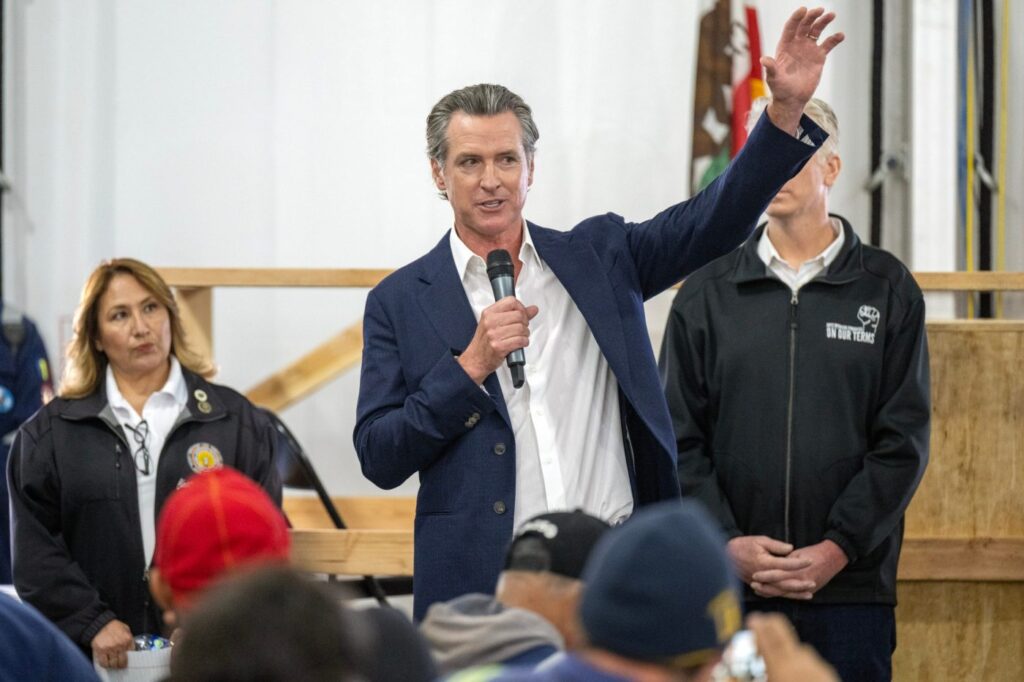
From its founding 173 years ago, California’s history has been dominated by one word: growth.
Its population grew from a few thousand to nearly 40 million, becoming by far the nation’s most populous state. Its economy grew to $3.6 trillion, the fourth largest in the world, and its $310.8 billion state budget is virtually the same as Russia’s.
But that was then and this is now. California’s indices of growth have hit a plateau.
The state’s population has been drifting downward for several years, and the state Department of Finance recently projected that it will remain virtually unchanged at just under 40 million at least until 2060 – a radical change from earlier predictions that it would top 50 million by then.
The state’s labor force is likewise stagnant, according to the state budget’s projections, which explains why employers are having such great difficulty filling positions. Personal income is barely keeping up with inflation, while real, inflation-adjusted wages, the budget says, are declining.
The Department of Finance projects that state tax revenue will remain virtually unchanged for at least the next several years, leading to operating deficits for the remainder of Gov. Gavin Newsom’s second and final term.
Looking ahead, the old saying that demography is destiny comes into play.
A stagnant population has myriad social, political and economic impacts – some already evident – such as not having enough workers to fill jobs and California’s loss of a congressional seat for the first time in its history.
A non-growing population is an aging population with ever-fewer Californians of working age (18 to 64), and greater demands for health care and other services. Even the youngest members of the post-World War II baby boom generation are now close to retirement.
The net outflow of population vis-à-vis other states exacerbates the workforce dilemma even more, and a chronic lack of workers discourages employers from expanding operations with a negative effect on the overall economy.
California lost one congressional seat after the 2020 census because its population grew slower than the rest of the country. Over the next several decades, at least, California and other slow- or no-growth blue states, such as New York, will lose more seats to fast-growing red states such as Florida and Texas, and therefore more presidential electoral college votes.
California’s net loss in state-to-state migration patterns may already be a factor in the state’s projection of stagnant tax revenues. The state’s tax system is inordinately dependent on taxing the incomes of the state’s most affluent residents. The highest income 1% of Californians generate nearly half of income taxes, which are the lion’s share of overall revenues.
Related Articles
Susan Shelley: The Biden family’s corruption scandal is only just beginning
Rudy Giuliani’s defamation lawsuit: Letters
Hunter Biden’s art poses major ethical problem
Never forget ideas of Milton Friedman
Kamala Harris is a genuinely terrible communicator and a liability for the Biden administration
A fierce debate has raged in academic and political circles over whether there has been a significant flight of wealthy taxpayers from the state as marginal tax rates rose and the federal government sharply restricted their ability to deduct state taxes on the federal tax returns – the latter an issue now raging in Congress.
The debate gained new fodder recently when SmartAsset, a website devoted to economic issues, revealed that California and New York have the highest out-migration rates of taxpayers with incomes over $200,000 a year.
The SmartAsset study, based on federal tax return data, found that in 2021, California had a net loss of 27,341 high-income taxpayers, a 42% increase from the outflow in 2020. California’s loss was the nation’s highest and Florida and Texas, neither of which has an income tax, were the major gainers.
It’s reasonable to assume that the flight from California contributes in some measure to the state’s projection of stagnating tax revenues and ongoing deficits.
CalMatters is a public interest journalism venture committed to explaining how California’s state Capitol works and why it matters. For more stories by Dan Walters, go to Commentary.
